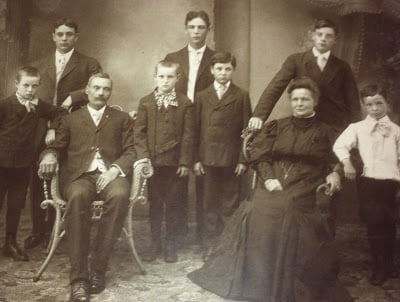 Photo via
Pixabay (2014), CC0 Public Domain
Photo via
Pixabay (2014), CC0 Public Domain
The USDA puts out an annual report on the cost of raising children. Did you consult their calculator before procreating? Shame on you. I'm not sure why, but I suspect the Department of Agriculture (huh?) spends quite a few of your hard-earned tax dollars on this, and you can't even be bothered.
Well, the media sure gets bothered by it. They want you to know that having children is...very expensive!!! In fact, raising children is so expensive that it is a wonder that anyone can afford it. How do they do it, I wonder?
The biggest factors contributing to how much moo-la the little devils burn through are: housing, health care and education. Oh, I never would have guessed that.
There appears no end to the effort to help people figure out how to handle these costs, such as shopping with coupons (seriously), moving to lower cost areas (no, really?), taking advantage of tax breaks (thanks!), and...having less children!!!
Efforts to actually address why housing, health care and education might be so expensive seem to exist mostly on the fringe. Do you agree?
Would it surprise you to find flaws in the calculator? Has the USDA never heard of sharing rooms or wearing hand-me-downs? Here's a thought: instead of Tha Fedurawl Gummint creating a calculator that is not remotely connected to reality, why don't they do a little research to see what people, like, actually spend?
[Tweet "It's expensive to raise children, until you do the math on Kiernan O'Connor's Love Calculator."]
A Different Calculator
But forget all that. I've developed a different calculator - one based on flawless, scientific research. It shows the Cost-Benefit Equation of having children, and it demonstrates, with incontrovertible evidence, that the larger the family, the wealthier.
 O'Connor Family c. 1907, photo courtesy of author, all rights reserved
O'Connor Family c. 1907, photo courtesy of author, all rights reserved
The calculator is based on a simple premise. Each family member has one unit of Love to offer every other family member. Before my wife and I had children, there were two units of Love in our home - I loved my wife, and she loved me. X (the number of people) times X-1 (self-love doesn't count) equals the amount of Love. 2 x (2-1) = 2.
When Patrick came along, even though we totally blew off sitting down and calculating how much we would spend on his housing, health care and so on, the equation changed to 3 x (3-1) = 6.
Return on Investment
Now, even for an English major, I could see that we had increased the number of people by 50%, but the amount of Love increased by 300%! And yes, homeschoolers, it's okay to do the math in your head.
Wanna be average - in round numbers? Having a second child increased the number of people by 33%, but increased Love by 200%. When our fourth was born shortly after my wife's 45th birthday (I know, I really should have been thinking about my retirement), that meant going from 5 to 6 people, a 20% growth in household population, yet a 50% jump in Love.
In our local Catholic homeschool group, a "typical" family is five children. Compare that to an average family of two children, and what you have is 175% more people (7 vs. 4), and 350% more Love (42 vs. 12). In fact, each person has twice as much Love. Now that's what I call a Return on Investment!
This calculator needs a name. Any ideas?
Copyright 2016 Kiernan O'Connor.
About the Author

Guest
We welcome guest contributors who graciously volunteer their writing for our readers. Please support our guest writers by visiting their sites, purchasing their work, and leaving comments to thank them for sharing their gifts here on CatholicMom.com. To inquire about serving as a guest contributor, contact editor@CatholicMom.com.


.png?width=1806&height=731&name=CatholicMom_hcfm_logo1_pos_871c_2728c%20(002).png)
Comments